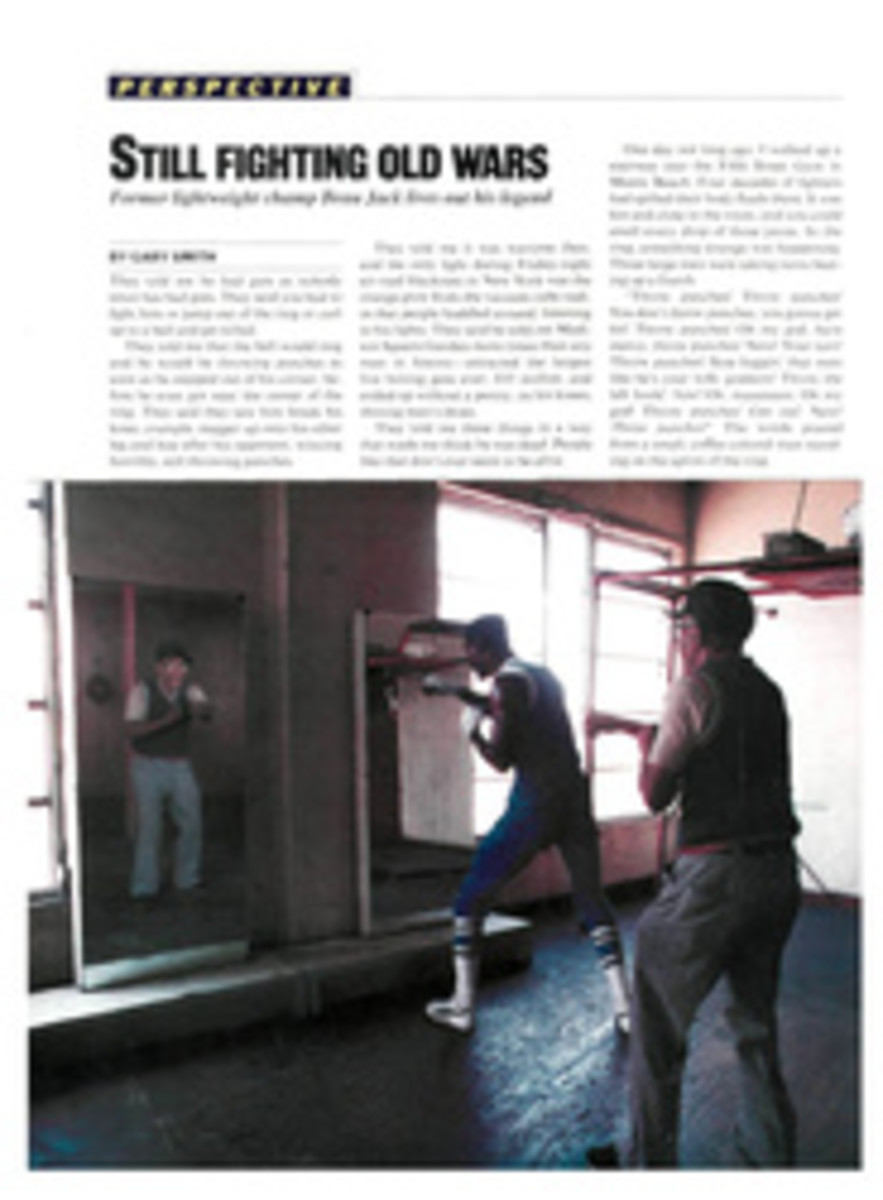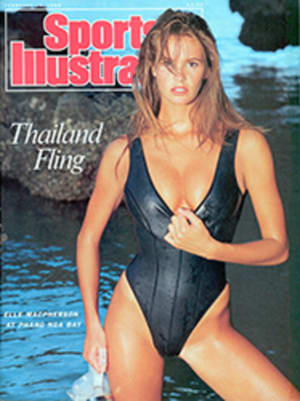
FRISKY AS THE DICKENS
On a bone-chilling February morning in 1868, a small group of hardy souls huddled on Boston's Mill Dam Road. Snow lay thick on the ground and a bitter north wind tossed tiny spiked diamonds of ice into the air. Quickly, three of the figures lined up and leaned forward, eyes fixed on some point far ahead.
"One, two, three—go!" counted one of the three in loud, measured tones, and they all set off walking briskly in the direction of Newton Center.
Walking races were not unusual in 1868. The mid-19th century was, after all, the golden age of professional foot racing, or "pedestrianism," as it was then known. But this race was special, not so much because of the conditions under which it was contested but because of the identity of its promoter, starter, pacesetter and self-appointed chronicler. His name was Charles Dickens.
Dickens was from childhood an avid, even compulsive, walker. He once wrote. "I think I must be the descendant, at no great distance, of some irreclaimable tramp." Scarcely a day went by that Dickens didn't flee his desk and take to the streets of London and its suburbs. He routinely walked as many as 20 miles a day, and once set out at 2 a.m. to walk from his house in London to his country residence in Gad's Hill, Kent, 30 miles away. As several of his walking companions described it, he had a distinctive "swinging" gait. And, like many a serious runner of today, he "made a practice of increasing his speed when ascending a hill," according to his friend Marcus Stone.
Dickens's walks served him in two ways. On one level, they were fact-finding missions during which he recorded with his keen eye the teeming urban landscapes whose descriptions were his stock-in-trade. A letter from Paris to a family friend, the Reverend Edward Tagart, begins innocently enough, "I have been seeing Paris." But what follows is a foot tour of the city that is characteristically Dickensian: "Wandering into Hospitals, Prisons, Dead-houses, Operas, Theatres, Concert-rooms, Burial-grounds, Palaces and Wine Shops. In my unoccupied fortnight of each month, every description of gaudy and ghastly sight has been passing before me in rapid Panorama."
But Dickens's walks played another, more important role in his life. They were, in a sense, acts of self-preservation. "If I could not walk far and fast," he once confessed, "I think I should just explode and perish." Unlike his contemporary, Anthony Trollope, who claimed he reeled off 3,000 words each morning before breakfast, Dickens found composition to be hard, painful work. The hours he spent at his desk agitated him tremendously, and walking served as a kind of safety valve.
Some of Dickens's friends viewed his obsessive walking with suspicion, hinting that if it was not a symptom of mental problems, it would almost certainly cause physical ones. "When Dickens lived in Tavistock House," wrote one concerned friend, "he developed a mania for walking long distances, which almost assumed the form of a disease. He suffered from lumbago, and I have always thought that this was brought on by monotonous pedestrianism—the determination to do a certain distance every day, generally from two in the afternoon till seven in the evening, one mile every quarter-of-an-hour, measured by the milestones." He often took houseguests on long, brisk walks. As Dickens wrote to his close friend, John Forster, "[Frank] Stone is still here, and I lamed his foot by walking him 17 miles the day before yesterday, but otherwise he flourisheth."
Dickens's passion for walking did not diminish with age. He was 55 when he began the second of his tours of America, in 1867, and despite a dizzying schedule of 76 readings in about 150 days ranging from Washington to Buffalo to Portland, Maine, he still made time to walk daily. But try as he might to deny it, Dickens was getting older, and the tour took its toll on him. Despite catching a severe and persistent cold, he hurled himself into every reading with such intensity that he was constantly on the verge of physical breakdown.
Dickens's failing health alarmed two of his companions on the tour, George Dolby and James Osgood. They prevailed on him to cancel some performances, but doing so upset him, and his spirits sank. To cheer him up, they hit upon a plan. "An idea struck us," wrote Dolby, "that a walking match between ourselves [Dolby and Osgood], to take place at the end of February, in Boston, would be a source of amusement to Mr. Dickens."
Clearly, they knew their man. Dickens, according to Dolby's account, "entered heartily into the scheme, volunteering to draw up articles of agreement, to act as a trainer, and to write a 'sporting narrative' of the match." Exercising his flair for exaggeration, Dickens billed the race as "The Great International Walking Match," since Dolby was English and Osgood American.
Dickens took to coaching with a seriousness that alarmed his two protègès. "If we had been professional pedestrians instead of amateurs," Dolby later wrote, "Mr. Dickens could not have paid more attention to Our 'coaching' for the great event." Wherever the pair happened to be, Dickens dragged them out for, if they were lucky, the type of walks he called "breathers," or, if they weren't lucky, the type he called "busters."
"Being requested to give them a breather yesterday," wrote Dickens, "I gave them a stiff one of five miles over a bad road, half the distance uphill, in the snow. I took them at a pace of four and a half miles an hour, and you never beheld such objects as they were when we got back; both smoking like factories, and both obliged to change everything before they could come to dinner."
By the time Dickens and his entourage reached Boston, public interest in the race had risen to such a pitch that it was deemed necessary to keep secret its time and place. Otherwise, claimed Dolby, half of Boston would turn out to watch.
Along with his other duties, Dickens was to choose the course. Three days before the race he set out to find the most devilishly difficult 13-mile route in all Boston. Judging from one gloating letter home, he clearly believed he had succeeded: "The condition of the ground is something indescribable, from half-melted snow, running water, and sheets and blocks of ice. The two performers have not the faintest notion of the weight of the task they have undertaken."
Whatever they were expecting, Dolby and Osgood must have been disheartened on race morning. Conditions were so atrocious that even Dickens was moved to a kind of awe. "To the excessive rigour of the icy blast, and the depth and state of the snow, must be added the constant scattering of the latter into the air and into the eyes of the men, while heads of hair, beards, eye-lashes, and eyebrows were frozen into icicles. To breathe at all in such a rarefied and disturbed atmosphere was not easy, but to breathe up to the required mark was genuine, slogging, ding-dong hard labour."
Although a carriage followed and provided them with what were euphemistically termed "creature comforts for the inner man," Dickens initially refused to ride in it. Instead, he acted as rabbit for half the race before dropping out.
The start was quick. "They got away exactly together," noted Dickens, "and at a spinning speed." For three miles the two walkers spun along quite comfortably, but at four miles they accelerated noticeably, with Dickens urging them on, through a deep snowbank and up a steep hill. Neither could gain an advantage until the turnaround at Newton Center. From there on, it was all Osgood, who "pegged" over the finish line in an impressive two hours and 48 minutes, with Dolby a respectable seven minutes behind.
That night Dickens gave what he immodestly described as "a very splendid dinner" for 18 that included such luminaries as Oliver Wendell Holmes and Henry Wadsworth Longfellow. And at the head of the table, Dickens was in fine form, regaling the giddy company with a stride-by-stride account of the day's proceedings, making up in wit for what his tale lacked in veracity. Dolby and Osgood's plan had worked: For a short while, Dickens forgot his other problems.
When Dickens sailed back to England in April, his bank account was considerably more robust than when he had left five months earlier, but he himself was noticeably frailer. "I'm nearly used up," he confessed to Forster. "Climate, distance, catarrh, travelling, and hard work have begun to tell heavily on me."
Dickens refused to heed his body's warnings. Instead of easing off, he hurled himself into more activity—work on a new novel, The Mystery of Edwin Drood, speaking at banquets and, most enervating of all, yet another reading tour of England. Still he continued to walk regularly. His posture was no longer upright, his stride no longer vigorous, but Dickens walked and walked as if he meant to outpace mortality.
On June 8, 1870, during dinner at Gad's Hill, Dickens announced abruptly that he had to go to London. Then, as if bent on walking there, he stood straight up. He suffered a stroke and collapsed on the spot. One of his daughters with the help of a servant carried him to a couch. Dickens died the next evening without regaining consciousness. Five days later he was buried at Westminster Abbey, his limbs at last stilled.
TWO ILLUSTRATIONS
TIMOTHY C. RAGLIN

